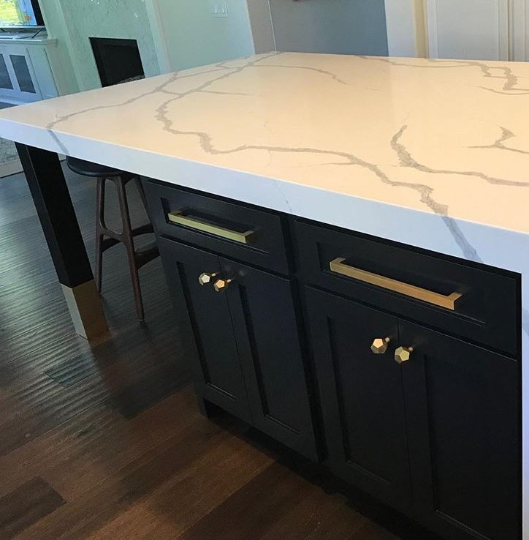Boost Your Room with Elegant Legs For Kitchen Island Designs
Boost Your Room with Elegant Legs For Kitchen Island Designs
Blog Article
Important Variables to Think About When Selecting Legs For Cooking Area Island
Choosing the suitable legs for a kitchen area island involves a careful analysis of several factors that can dramatically affect both performance and aesthetic allure. As we check out these components, it ends up being clear that each choice can have far-ranging ramifications for the overall kitchen area experience.
Material Options
When picking legs for a cooking area island, recognizing the various material alternatives is important for accomplishing both visual charm and architectural integrity (Legs For Kitchen Island). The selection of product significantly influences not only the durability of the island yet likewise its general layout and capability
Wood is a popular option, providing warmth and flexibility. Strong woods, such as oak or maple, give stamina and can be stained or repainted to match the cooking area design. Steel legs, typically made from stainless steel or functioned iron, contribute a industrial and modern feeling while making sure sturdiness and stability. These materials are resistant to put on and can sustain substantial weight, making them suitable for larger islands.
One more option is engineered products, like MDF or plywood, which can be a lot more cost-efficient while still providing an array of finishes. They may not give the exact same degree of stability as strong timber or metal. Legs For Kitchen Island. Last but not least, materials such as acrylic or glass can develop a modern appearance, though they might require extra support to ensure stability.
Eventually, the option of product for cooking area island legs should align with the desired performance and the overall style of the kitchen.
Design and Style

When taking into consideration style, the form and surface of the legs are important. Conical legs can provide a feeling of lightness and style, while thicker, more durable legs can communicate strength and security. Furthermore, the coating-- be it painted, discolored, or all-natural-- should complement the cabinetry and counter top products to develop a unified appearance.
Moreover, the design of the legs can also show individual preference. Customized or ornamental legs, such as those including elaborate makings or distinct geometric shapes, can work as prime focus, including personality and individuality to the cooking area. Inevitably, the right selection will certainly not just improve performance but likewise raise the visual charm, making the cooking area island a standout feature of the home.
Elevation Factors To Consider
Choosing the proper height for kitchen island legs is critical, as it straight influences both performance and comfort. The conventional height for a kitchen area island commonly varies from 36 to 42 inches, straightening with usual counter top elevations.

It is also vital to represent customers' preferences and heights. Tailoring the height can guarantee a comfortable experience for all family members, making the cooking area island a more satisfying and useful space.
Weight Assistance
Making sure ample weight support for cooking area island legs is vital for both security and capability. The kitchen island often offers several functions, consisting of cooking, dining, and added storage, requiring a robust assistance framework. When picking legs, it is crucial to think about the overall weight ability required based upon the island's planned usage and the this content materials that will certainly be put on it.
The choice of product for the legs plays a considerable role in their weight-bearing capacities. Strong wood, steel, and durable compounds generally give premium strength contrasted to lighter materials. Furthermore, the style of the legs-- whether they are right, tapered, or have a pedestal kind-- can affect their ability to distribute weight successfully across the structure.
In addition, the leg positioning should be tactically prepared to enhance stability. Legs placed at the edges or with a larger base can much better sustain larger loads. Always consult the maker's specifications concerning load limits to guarantee that the legs can sustain the designated weight without compromising safety. In summary, choosing kitchen island legs with adequate weight assistance is crucial for producing a secure and practical cooking room.
Installation and Upkeep
Correct setup and maintenance of kitchen area island legs are crucial for making certain durability and security. This commonly includes securing the legs to the island base utilizing proper fasteners, making certain that the legs are level and straightened.
Once mounted, regular upkeep is required to protect the honesty and appearance of the legs - Legs For Kitchen Island. For wood legs, periodic cleansing with a wet cloth and application of appropriate timber polish can stop moisture damage and keep their coating. Steel legs might call for a mild cleansing service to remove grease and crud, followed by a completely dry towel to avoid corrosion development
Furthermore, evaluate the legs routinely for indicators of wear or damages, such as cracks or loose joints. Tightening screws or bolts as needed can also extend the life expectancy of the legs. By sticking to these setup and upkeep methods, home owners can ensure that their kitchen island remains sturdy and visually appealing for years to come.
Conclusion

Aesthetic coherence is vital in picking the design and design of legs for a kitchen island, as these aspects considerably affect the total setting of the space. Tapered legs can offer a sense of agility and sophistication, while thicker, extra durable legs can convey strength and stability.Choosing the suitable height for kitchen island legs is important, as it directly affects both performance and convenience. In recap, choosing Web Site kitchen area island legs with appropriate weight support is necessary for producing a practical and risk-free culinary space.
In conclusion, selecting legs for a kitchen island necessitates mindful factor to consider of numerous aspects, including material options, design, elevation, weight support, and setup.
Report this page